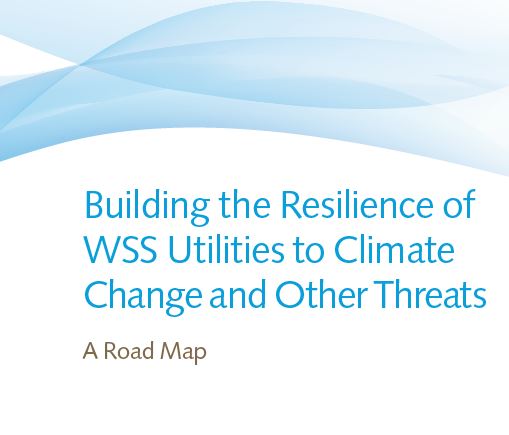Building the Resilience of WSS Utilities to Climate Change and Other Threats
Water supply and sanitation (WSS) utilities are expected to become increasingly susceptible to the expected impacts of climate change. These impacts will materialize with more frequent or more severe extreme events, including floods and droughts; different rainfall patterns and temperatures; and seasonal shifts. However, many stakeholders, managers, and investors do not yet fully consider future climate conditions as a necessary input to business risk analyses and long-term planning. Yet it is critical to adequately consider climate risks and opportunities when planning for WSS services and water resources. This failure to consider future climate conditions in planning exercises to date can be explained by multiple factors, including (i) lack of recognition that future climate trends will differ from historical data; (ii) limited knowledge about the potential risks to utilities’ business operations over various timescales; (iii) inadequate access to relevant climate and weather information to incorporate into infrastructure design, operations and maintenance (O&M), and business continuity plans; and (iv) the perceived costs of making adjustments associated with planning for climate change. Considering climate risks is likely to improve the service provider’s resilience and result in increased reliability and operational effectiveness in both the short and long term. This may directly benefit the local economy, national resource security, and national economic growth. WSS utility planners and engineers have dealt with natural climate variances and disaster planning as part of the design process for many years. However, the traditional methods for these plans have not considered the deep uncertainty surrounding many future conditions, which are further exacerbated by climate change. Deep uncertainty is uncertainty that occurs when parties to a decision do not know or cannot agree on models relating the key forces that shape the future, the probability distributions of key variables and parameters in these models, or the value of alternative outcomes. There currently is no established road map available to guide WSS utilities in planning for an uncertain climate future, or more generally for decision making under deep uncertainty, which can include issues such as population growth projections, local economic development, or changes in future demand. Thus, while this report frequently links deep uncertainty to climate change, the reader should understand that the term encompasses a much broader suite of uncertainties facing WSS utilities. This document provides practical and workable guidance to incorporate uncertainty into the choices of WSS utilities, be it through design, planning, or operations. In applying the process presented here, a utility will be better prepared to deal with future conditions: it will be more resilient.
